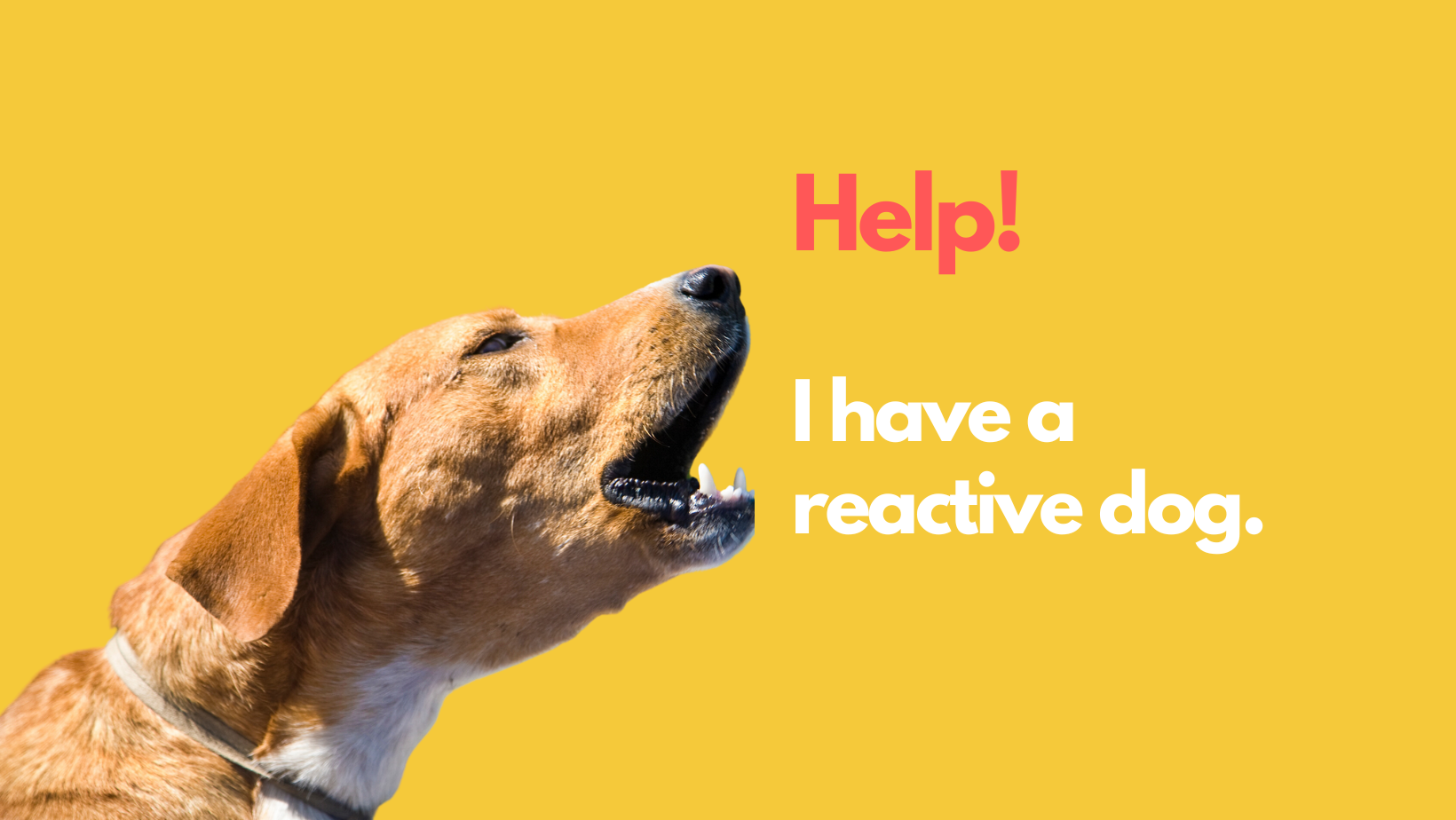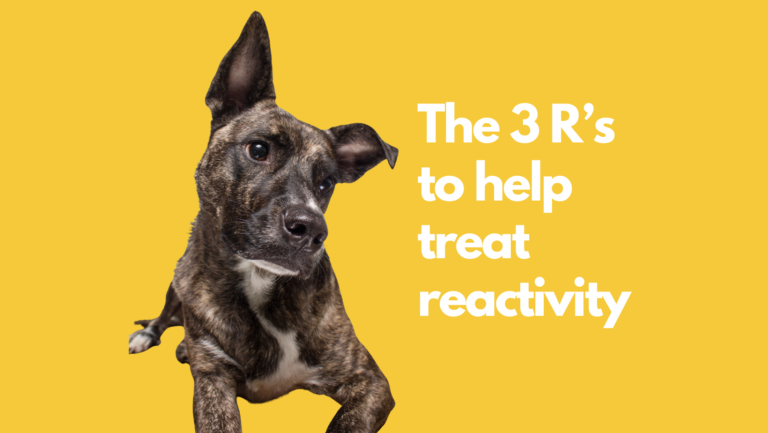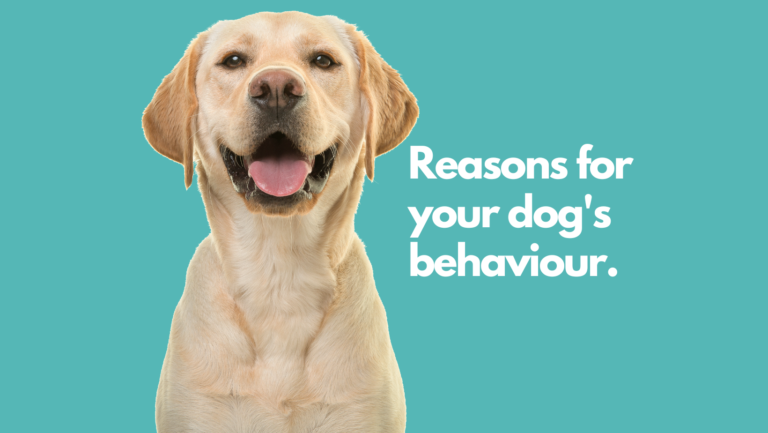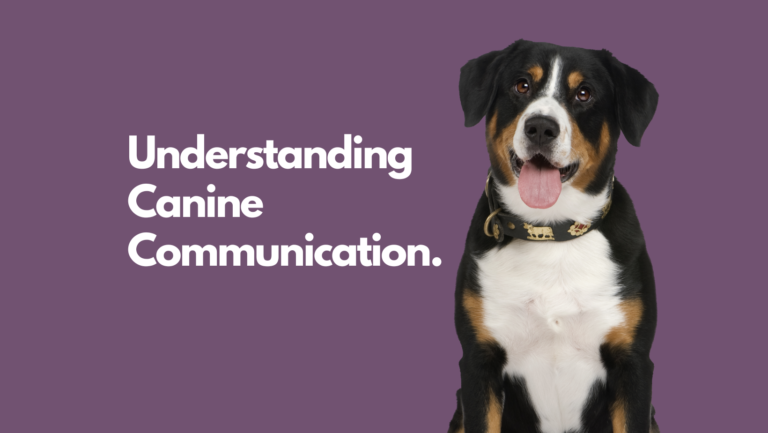My reactive dog

Behaviour problems based in fear are a common problem, that at some stage, most people experience with their dogs. When a dog is fearful, you may experience a multitude of different behaviours, depending on the individual dog.
In canines, a common response to fear is reactive behaviour. The cause or trigger to the fear is irrelevant, as fear is based in emotion, and for all species, emotion is something that each individual has no control over.
Fear is what the individual perceives as scary. When a dog is scared, they are not being naughty, rude, or controlling – they are in self-preservation mode – this is an involuntary instinctual response in order to survive. Fear occurs when the dog is confronted with something that they feel overwhelmed, threatened and intimidated by.
The first takeaway from this blog is that fear is a NORMAL emotion that any creature on this planet experiences when they are in such a situation, regardless of if the fear is real, or imagined! A dog who is scared is apprehensive and may try to hide away, show avoidance behaviours, shake, cower, bark, whine, and may even show aggressive behaviour. These are natural defensive behaviours to deter a threat and protect oneself.
Here are some reasons why your dog may be reactive on lead:
– The dog has not been appropriately exposed to the world around them or other dogs and is frightened of new ‘things’, places, other dogs, and people
– The lead interferes with the dog’s natural social ability to interact with another dog.
This is because when two dogs meet each other for the first time they have the ability to move freely around each other, sniffing body parts, and can retreat away from the other dog if they choose to. The leash inhibits free movement, and the dogs can get tangled up on the leash which escalates the situation very quickly into reactivity as the dogs are trapped and are unable to escape.
– Sometimes the owner unintentionally stresses the dog out as the owner is anticipating the dog’s behaviour when approaching another dog. As the dog is a master of reading body language, he may pick up on the owner’s distress, and the tightening of the lead is the added stressor or trigger.
– The dog may have negative associations with being on a lead. Has your dog ever been attacked when on lead? Other associations could be punishment when being on lead, physical or verbal corrections, or a jolt from a shock collar which your dog may associate with the presence of another dog when on lead. Punitive methods can have unintended consequences and can create strong negative associations for your dog which can cause them to be in a constant state of flight and fight.
– Predisposed behaviour in certain breeds, such as guarding breeds and some livestock guardian dogs, who naturally do not want strange dogs/people, etc in their space – as they are ‘predisposed’ to guarding behaviours.
If your dog displays reactive behaviour when they are on a lead – this is because your dog is having a hard time. The dog is not coping!
The cause can be due to previous trauma, panic, frustration, over-arousal, or fear (or a combination of all four!)
The lead restricts the dog’s ability to move (freeze or flee = survival instincts) which limits the dog’s options, so they are left with one option for survival = fight!
Many dogs are great around other dogs, but become frenzied when presented with the sight of another dog, as they may want to greet them, but are restricted by the lead.
Imagine the same response when holding a child’s hand and they want to go into the candy store. They are not being bad or naughty, they are frustrated and do not have the maturity or cognitive intelligence to process and regulate their emotions.
Now, when it comes to the dog who is reactive when restrained on a lead because they are fearful, the lead restricts their ability to escape from the perceived threat that is triggering their response, thus, they display reactive defensive aggression in trying to deter the threat. This is called ‘distance increasing communications’.
Your dog barking, and lunging at the unknown dog, may be YOUR dog saying – “Look how scary I am, go away, if you come close I will have no choice, I will HAVE to bite you!”
What do you do about leash reactivity?
First things first…
Instead of trying to ‘fix’ the reactivity, we need to change how the dog feels about the trigger. We would do this by teaching the dog to associate the ‘scary thing’ with good things.
When it comes to walking in suburban areas, it pays to be highly observant in your environment. If you see something in the distance that you know could ‘trigger’ your dog to be reactive, play your part in taking control of the environment, cross the street immediately and take them out of the situation that could potentially cause them any distress. The biggest challenge you will face is distance. You will need to be at a distance where the dog can see the trigger but NOT react to it.
As you walk past the trigger on the other side of the road, praise your dog if they look in the direction of the trigger, feed the dog a treat and keep walking past casually. If the dog tries to pull towards the stimulus, gently hold your harnessed dog’s leash firmly by your stomach and keep walking away (increasing distance will help your dog feel safe) all while gently calling your dog (play it down and be calm) – “Come on, let’s go this way”, and walk with purpose.
Do not yank/ jerk the leash to pull them away. Walk and hold your lead firmly but gently like you were holding your child’s hand while taking them out of the candy store remaining calm. This is emergency management, not training. If you are startled by something in the environment that you didn’t expect – both of you need to immediately leave. Do not respond to any reactive behaviour the dog may display – they are not being naughty – they are HAVING a hard time dealing with the stimulus in the environment – not giving you a hard time. Remember – it’s ok to leave the party!!
The goal in that moment in time is to break the dog’s eye contact and take them out of that situation immediately to help them feel safe. In this context, remember distance and space are your friends!
This is NOT a time to be ‘training’ your dog, as when your dog is in this highly emotional state it is impossible for them to ‘learn’ anything, as stress inhibits learning. You cannot train a dog who is in that emotional state.
Once the dog is at a far enough distance where they have regulated their emotions and ‘calmed down’, you could ask them for a simple task and reward that. Then continue your walk.
If your dog is continuously reacting to things in the environment then you need to stop putting them in the situation where they are reacting. This leads to habitual behaviour as you are giving the dog the opportunity to rehearse or continually practice what you perceive to be undesirable behaviour.
The alternative is to set your dog up for success, and rather walk them in low human/dog traffic areas or ‘low distracting environments’ that would not trigger the reactivity for a very long time, then slowly, over time, you would gradually expose them to busier environments by using systematic desensitisation and counter-conditioning methods.
Do not punish your dog.
Punishment will most likely worsen the behaviour – even if it appears to work through pain/suppressing undesirable behaviour it would be like putting a plaster on a festering wound.
There may be other underlying factors to this behaviour. If you are experiencing behavioural problems and feel you need help, please first reach out to your veterinarian to rule out any physiological causes or associations that could be causing the problem behaviour. If the dog has no medical causes then they will refer you to a professional force-free trainer or qualified behaviourist in your area.
https://www.preventivevet.com/dogs/dog-training-aversives
https://www.petprofessionalguild.com/…/Position…
Tags
What do you think?
Related Articles

The 3 R’s to help treat reactivity
Training your dog is not just about teaching them to listen and ‘fixing’ unwanted behaviours; it’s about creating positive associations with their environment and building

Reasons for a dogs behaviour
Dogs behave the way they do for many reasons. They do NOT do things deliberately to be stubborn or ‘naughty’, nor do they aim to

What is Dog Body Language?
Our canine friends have an intricate language of nonverbal communication known as body language. Body language is the way a dog uses his or her
